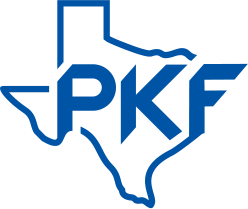Many new or existing business owners looking for their first loan or line of credit face the daunting task of picking the right financial institution and subsequent credit agreement that best fits their current and future needs. Unfortunately, this can be a huge challenge for many owners who do not have any previous experience in finance or accounting.
Signing a loan that is not properly negotiated can cost tens of thousands of dollars per year, while choosing the incorrect loan can be an expensive mistake that cuts into your bottom line.
Most loans or lines of credit come with different covenants, and many require the borrower to provide yearly financial statements. These range from internally prepared financial statements to compilations, reviews or audits. Many first-time borrowers don’t understand the differences among these reports or the costs associated with producing them.
Financial statements prepared by a CPA firm offer the assurance banks look for when they issue a loan. Typically, the larger the loan, the more assurance the bank will require to assess whether the borrower is capable of repaying the debt, increasing or decreasing the obligation if needed. Some loans only require a compilation, which technically provides no assurance, while loans that may appear riskier to the bank require a financial statement audit.
- Compilation. A compilation is a financial report put together by a CPA firm that follows guidelines established by the AICPA to assure the financial statements are presented in accordance with U.S. Generally Accepted Accounting Principles (GAAP) or other recognized standards recognized by the AICPA. This is a relatively inexpensive report, compared to the other two reporting options, but it also provides no assurance.
- Review. A review is the next step up and provides limited assurance. This report must also be done by a qualified CPA firm, but unlike a compilation, the firm must be independent; in other words, the firm has no financial interests in the business, or with the area of the business, it reviews. A review is typically two or three times more expensive than a compilation, with a corresponding increase in the level of work that goes into the review process, as well as the increased risk that the accounting firm assesses in preparing the reports. Reviews, however, are like compilations, in that they are the representation of management and not the CPA firm.
For example, the CPA firm completes inquiries, analytics, ratio analysis of the account balances and other limited nonsubstantive procedures to provide limited assurance that the financial statements are accurate and presented fairly in accordance with the requisite standards. Just like a compilation, a review follows the standards set by the AICPA.
- Audit. This is typically a much more involved process and provides reasonable assurance that the financials are presented fairly, in all material respects, and are in accordance with the stated financial framework, such as U.S. GAAP or International Financial Reporting Standards (IFRS). Audit procedures include an examination, substantive analytics, confirmations, and for some companies, the testing of internal controls. Audits can be two or three times the cost of a review and can even get into the six figures, depending on the company, its size and the complexity of the transaction involved.
There can be a major price difference between the procedures banks may require, so it is important to note that, just like other aspects of your loan, these requirements can be negotiated. As with interest rates, collateral and other important factors of a loan, the financial reporting requirements are just as substantial. At times, a bank may be asking for audit when a review might suffice and be a better fit for your business needs at the time.
Yet, after obtaining a loan or line of credit, it can be a painful lesson to learn of the costs associated with preparing the required financial statements, as well as the subsequent charges incurred by the CPA firm. It takes proper planning to prepare for a compilation, review or audit, which also adds to the costs incurred if the company is not ready for the process.
Most business owners do not like surprises. The best way to avoid this is to always read the fine print and make sure you understand all of the covenants and reporting requirements that come with a debt obligation. Discuss these items with your banker and CPA to ensure you understand and can meet them.
In addition, find out if any of the three can be interchanged from one year to the next. For example, getting a review one year and an audit the next can save a lot of time and money, may still be able to satisfy the financial institution and allow the business owner to grow into the reporting process.
Chris Hatten, CPA, is a director of Audit for PKF Texas. Sam Razmandi is a senior consultant with PKF Texas. Contact them at chatten@pkftexas.com or srazmandi@pkftexas.com.

